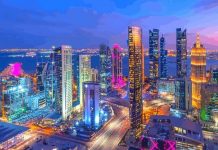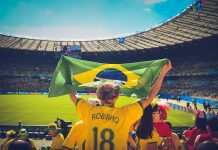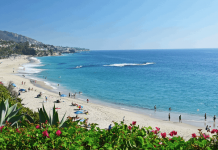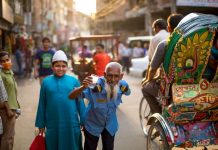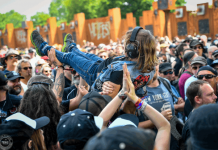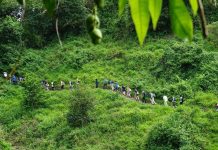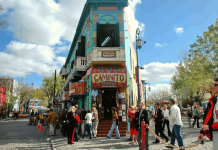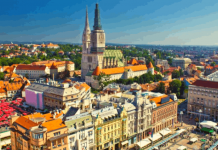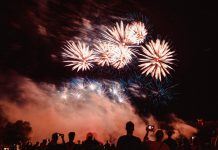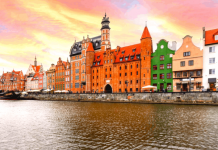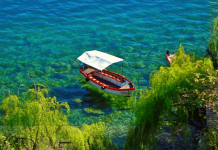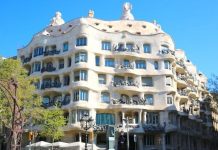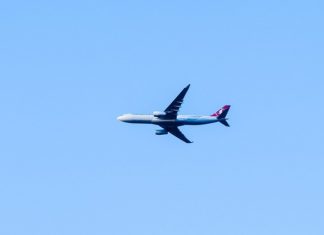What would it be like to celebrate the New Year drenched in water? Say no more because the Thailand Songkran Festival is truly a unique and fun way of welcoming a new year ahead.
Celebrated every April 13-15, Thailand’s National New Year Holiday is truly a sight to behold, which people far and wide visit and celebrate.
Discover more about Thailand’s world-famous New Year Festival, also known as the Thai Water Festival, and feel like you’ve taken a trip into one of Thailand’s most exciting and festive occasions.
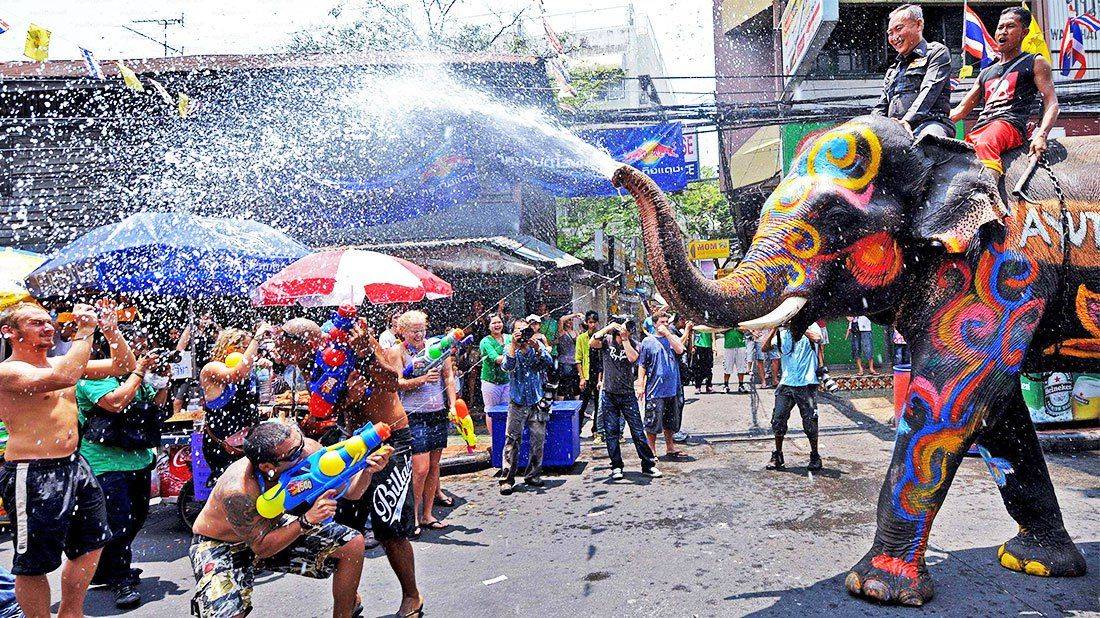
History and Meaning
Songkran comes from the Sanskrit word saṃkrānti, which means “astrological passage.” The word also means to “move” or “change place.” The festival derives its name from the movement of the sun into the Aries zodiac. Although a Songkran happens every month, Thais celebrate the Songkran wherein the sun moves from Pisces into Aries.
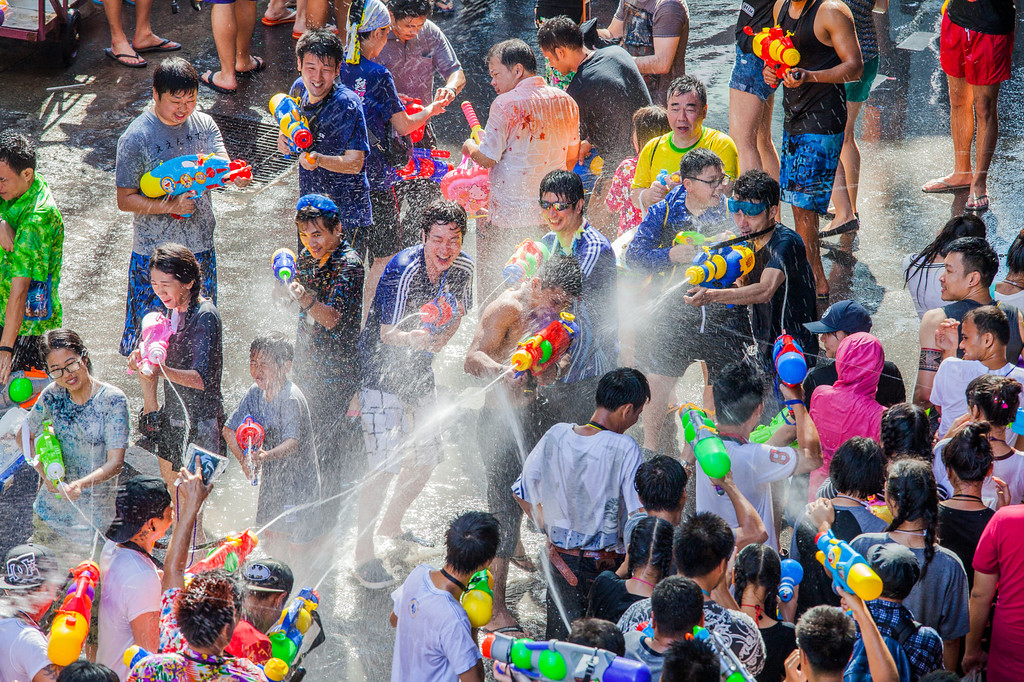
The Songkran, in actuality, should be called “Maha Songkran,” which means the “great Songkran.”
This explains why the Thais traditionally celebrated April 13 as the new year because this coincides with the sun’s movement into Aries, which marks the end of a 12-month cycle and the beginning of another year in the solar calendar.
In 1989 when the Thai cabinet adjusted the date of the Songkran to April 12-14, different from the original date that was April 13. Until 1888, Thais celebrated Songkran as the official new year and then adjusted to April 1.
Moving the New Year Celebration Date
In 1940, Thailand joined the rest of the world to celebrate New Year on January 1, and Songkran became the national holiday that it is today. Have you ever wondered where the celebration of this festival started? The Wat Pho, the Buddhist scripture, stated that the festival started from Kapila Brahma’s death.
History/Origin
It was told that there once lived a wealthy man who had a drunkard neighbor. The drunkard mocked the wealthy man for not having a child; the wealthy man prayed to the Sun and Moon for a son. He was finally given one after numerous failed attempts when he offered cooked rice to the tree god in a banyan tree, who asked Indra, the ancient Vedic deity, to grant his wish.
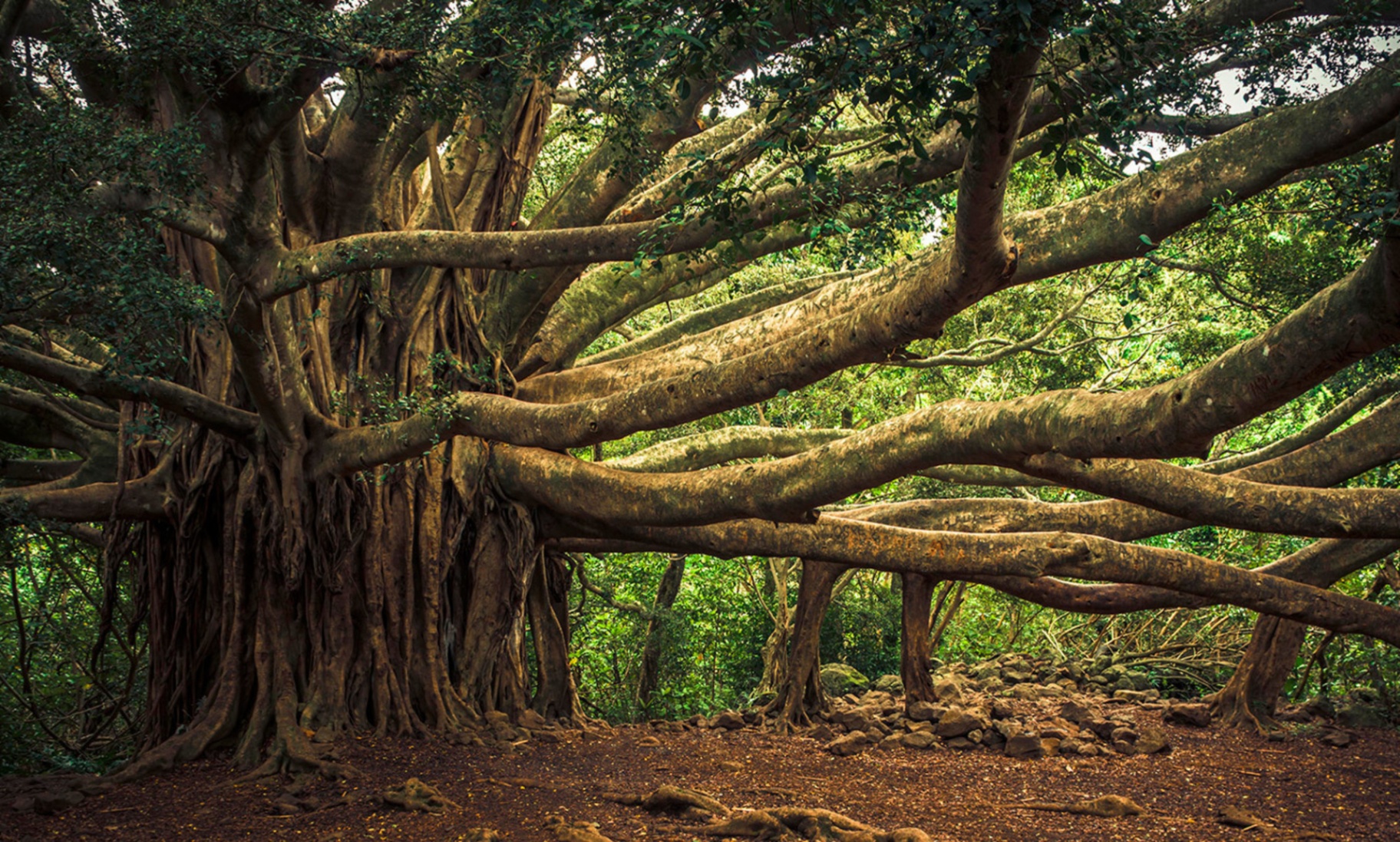
Thammabal was thus born and proved to be a clever child. The god Kapila Brahma, wanting to test his cleverness, asked him, “Where is the glory of men located in the morning, during the day, and the evening?”.
They agreed that if Thammabal could not answer, he would have his head cut off, but Kapila Brahma would have his cut off if he could answer. Thammabal overheard an eagle say the answer, which he memorized and recited to the god. Kapila Brahma, having lost, called his seven daughters and told them that they must cut his head off.
Thungsa, the eldest, decided to place his head on an elevated tray, the phan and hid it in Mount Kalish with the belief that by doing so, calamities would be prevented. Every year when the Maha Songkran happens, the daughters would form a procession and take their father’s head with them.
How it Is Celebrated
Songkran is best known as the Thai Water Festival, using water as a symbolism according to Thai culture to wash away the bad luck and provide a clean start for the year to come. People who throw water at others mean they wish a good year ahead for them.
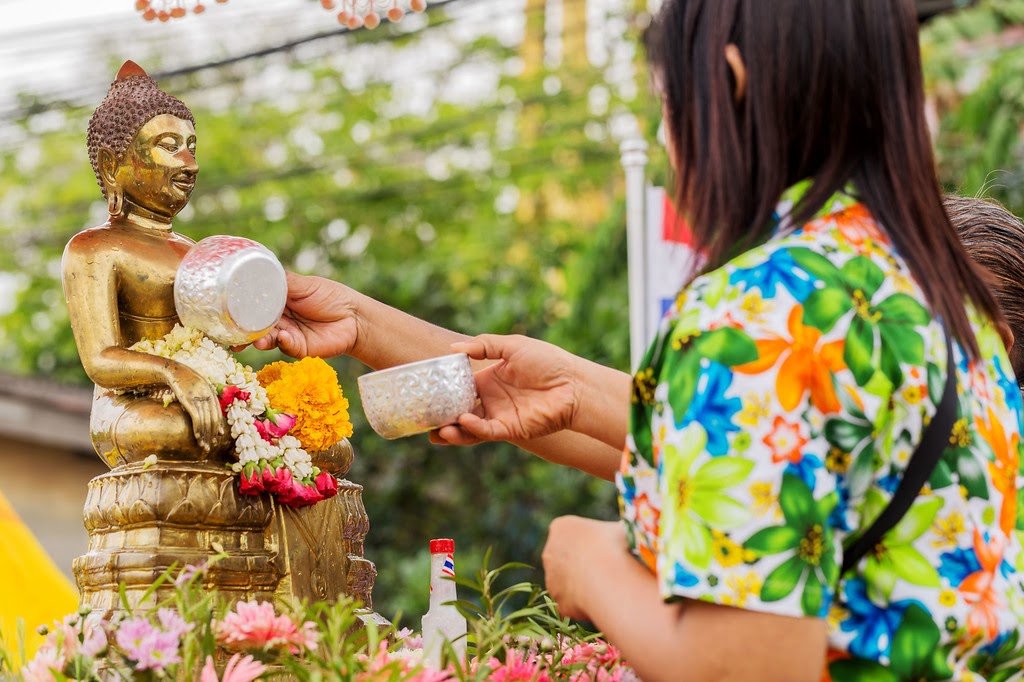
Sanuk (which means having fun) is at the core of the Songkran festival, and this explains why people of all ages and places love to join the festive celebration. Part of the celebration is to clean Buddha images.
These images are paraded through the streets where locals can douse them with water. Aside from this, jasmine-scented water is also poured over the elders’ hands as a symbol of respect. Another Songkran tradition is carrying sand to the local temple to create merit with the sand formed into stupas and decorated with pennants.
In some areas of Thailand, the tradition evolved into crafting sand sculptures such as the ones found at Bang Saen Beach in Chonburi. It is also tradition to paste “din sor pong,” a powder, on each other as a way of wishing good luck to others.
Traditions and Practices
In South Thailand, Southerners follow three rules in Songkran celebration: work as little as possible and avoid spending money, do not hurt other persons or animals, and do not tell lies. In Northern Thailand, gunfire or firecrackers is used to drive away bad luck. In East Thailand, sand pagodas are made and displayed for everyone to see.
Food is also prepared and given to the elders of the family. Over at the capital of Thailand, in Bangkok, roads are closed, and posts are filled with water guns and water buckets. The water festival involves praying, releasing birds and fishes, listening to sermons– all part of a belief that these rituals or activities bring longevity, prosperity, health, and luck.
Houses are also cleaned thoroughly to prevent bad luck from coming their way. Of course, the festival’s solemnity and spirituality are not forgotten, as Thais would spend their time visiting their wats to give alms, ask for forgiveness, and pray to the gods to bless them with a good year ahead.
The Best Places to Celebrate
Here is a list of the best places to celebrate the famous Songkran festival and the activities in each for a unique and memorable experience.
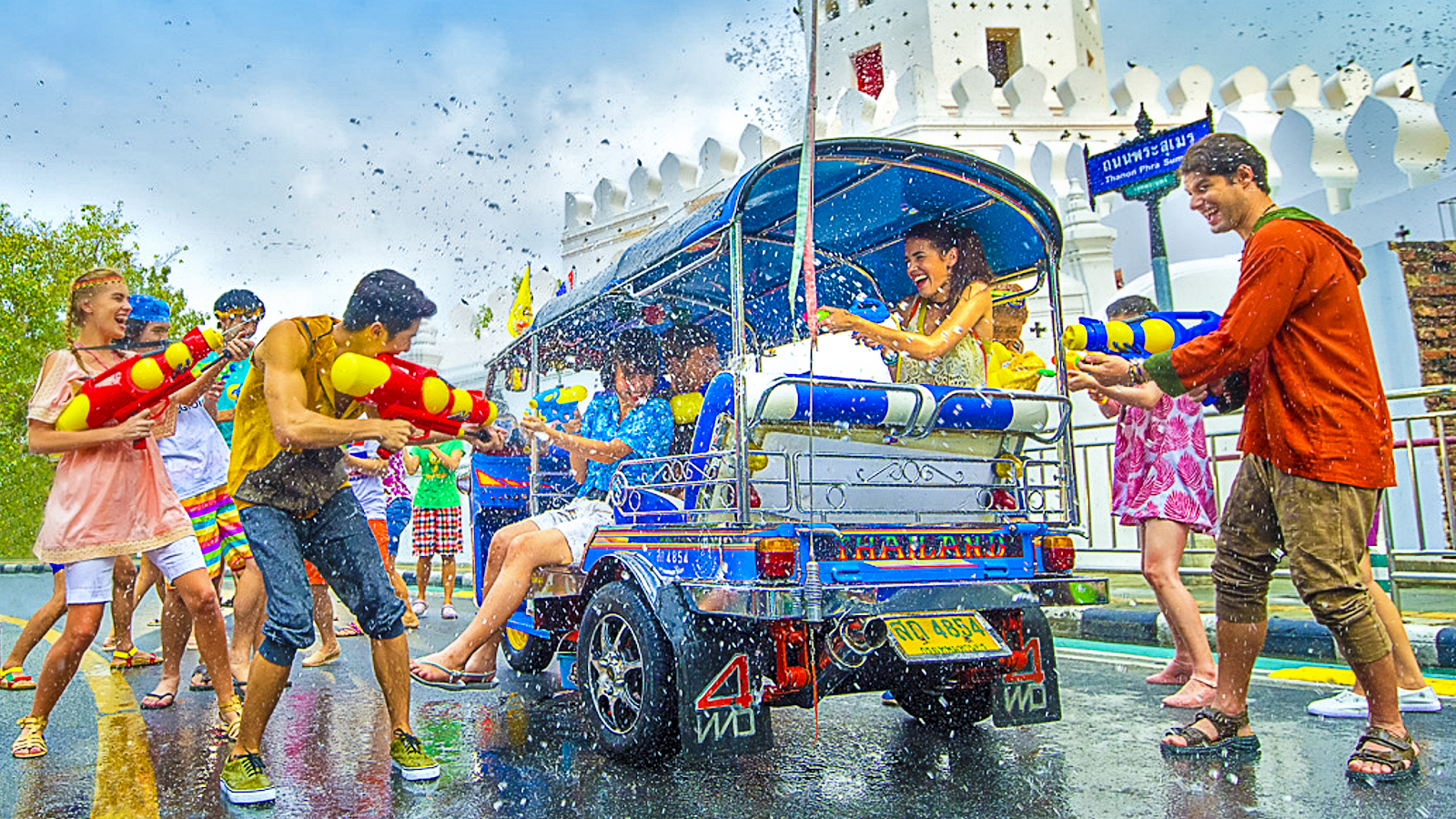
Chiang Mai – The celebration here can take as long as five days. The city takes pride in being known as one of the best places to enjoy the festival with a wide range of cultural activities, street parades, and the infamous water fights across the entire city.
Bangkok –The capital of the city is lively and filled with many parties. Among these is Khao San Road, the backpacking heartland where thousands of people enjoy walking along the road with energized crowds, buckets of water, or pistols. Second is the Silom Road, which is filled with vendors selling anything under the sun.
Phuket – the biggest and most popular island in Thailand, also holds a fair share of fun activities. The Patong beach strip and Bangla Road are some of the best places to visit. Interestingly, even police officers exchange their loaded guns for water pistols– talk about fun!
Beaches and a Lot More Fun
Since Songkran is a water festival, it’s no secret that celebrating this festival near bodies of water is one of the best ways to go! Famous beaches in Thailand, such as Koh Samui, Koh Phangan, and Pattaya, offer their versions in the one-of-a-kind Songkran experience.
Pattaya’s celebration includes the Wan Lain Festival, which extends until April 19. A breathtaking view of intricately-built and elaborate sand sculptures on the beach can be seen in Bang Saen, which is around an hour away from Pattaya.
Although the Songkran is mainly celebrated in Thailand, there are also places in other Asian countries that celebrate this famous New Year Festival. Still, we’ll get to that in a bit after discovering the Songkran celebration in a small quaint town in Mae Song Hon.
Songkran in Pai
Just three hours away from Chiang Mai, this town of Pai is full of affordable guesthouses for accommodation, restaurants with spas, and elephant camps. Waterfalls and natural hot springs can also be found nearby the town.
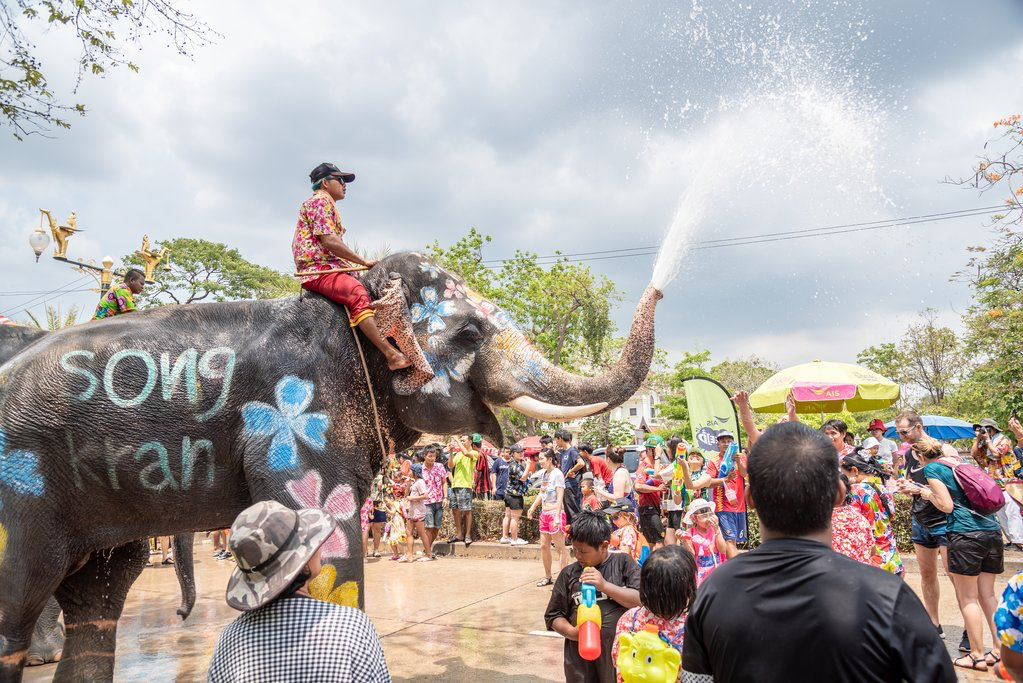
Locals in Pai are very inviting and welcoming, so the best part about spending Songkran here is that you can observe how locals celebrate the festival and become a part of their celebration.
During the festival, people flock to a World War II Memorial Bridge to bathe, eat and enjoy. Fun fact: if you are not comfortable getting wet, it would be acceptable to politely say no and get away with not getting in the water.
However, there is no stopping those along the road who throw cold water at passersby! Now, let’s take a look at how other neighboring countries celebrate the Songkran festival.
Songkran Outside Thailand
Malaysian states such as Kedah, Kelantan, Penang, Perak, Perlis, and Terengganu celebrate the Songkran as well.
In India, Songkran is better known as Pana Sankranti, the traditional new year festival of Buddhists and Hindus. This is celebrated in places such as Odisha, India. In some places in Bizu, Boisuk, Shangrai, and Boisabi, Songkran is celebrated as Sangken.
In the US, Songkran is annually celebrated on the U.S Territory of Wake Island. This is participated in by Air Force members and American and Thai contractors.
Conclusion
The Songkran, like any other festival in the world, is truly a fun and memorable experience. This is when the country is filled with positivity and optimism, a brand new outlook in life, and the chance to create a fresh start. Sawatdee pii mai!

